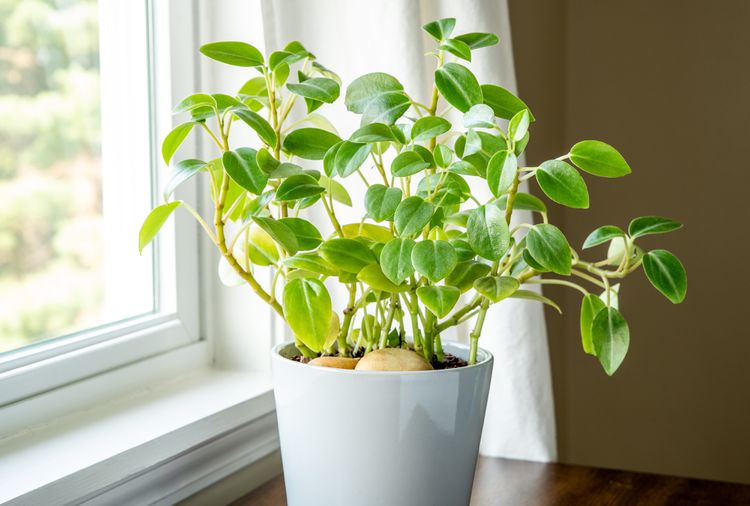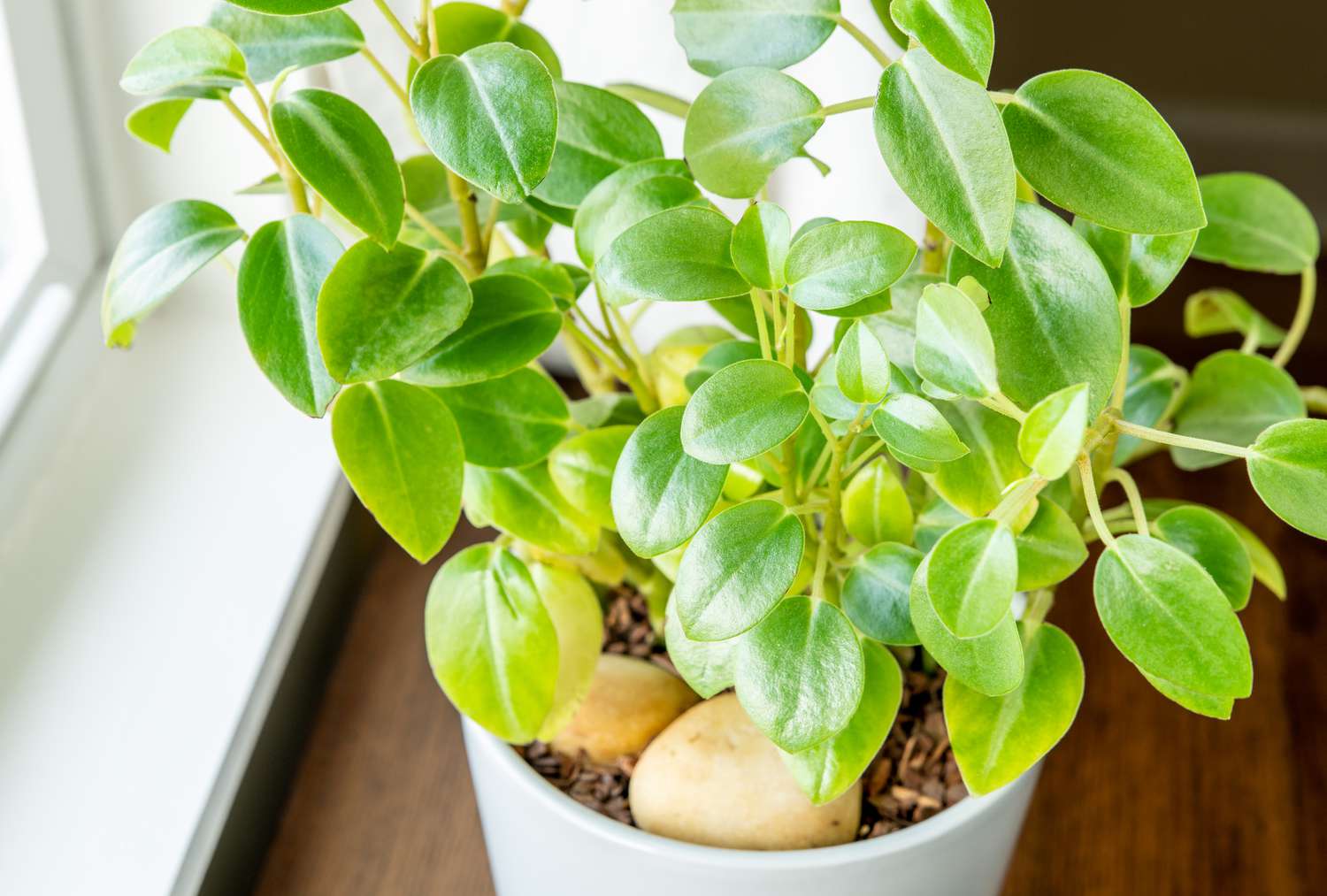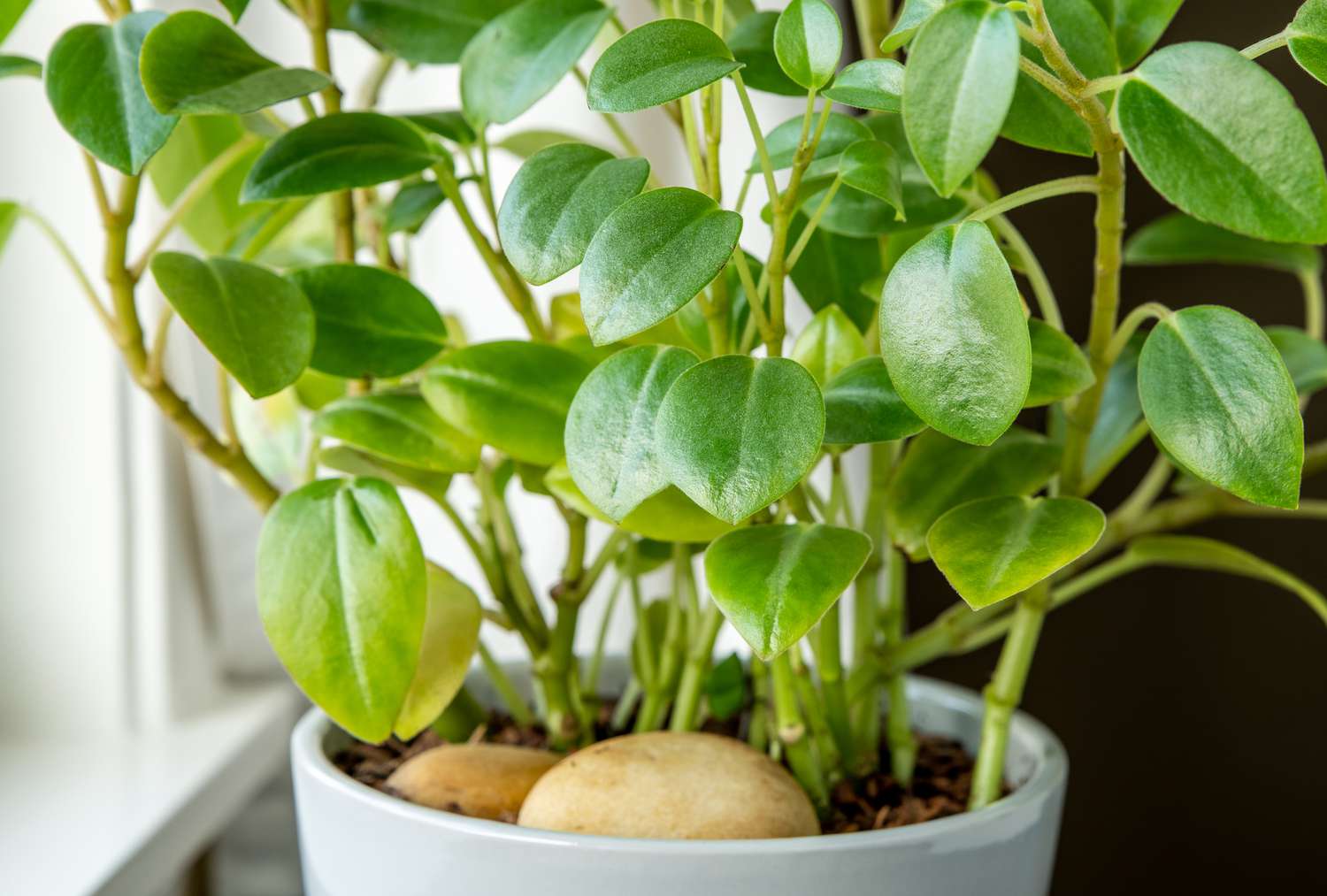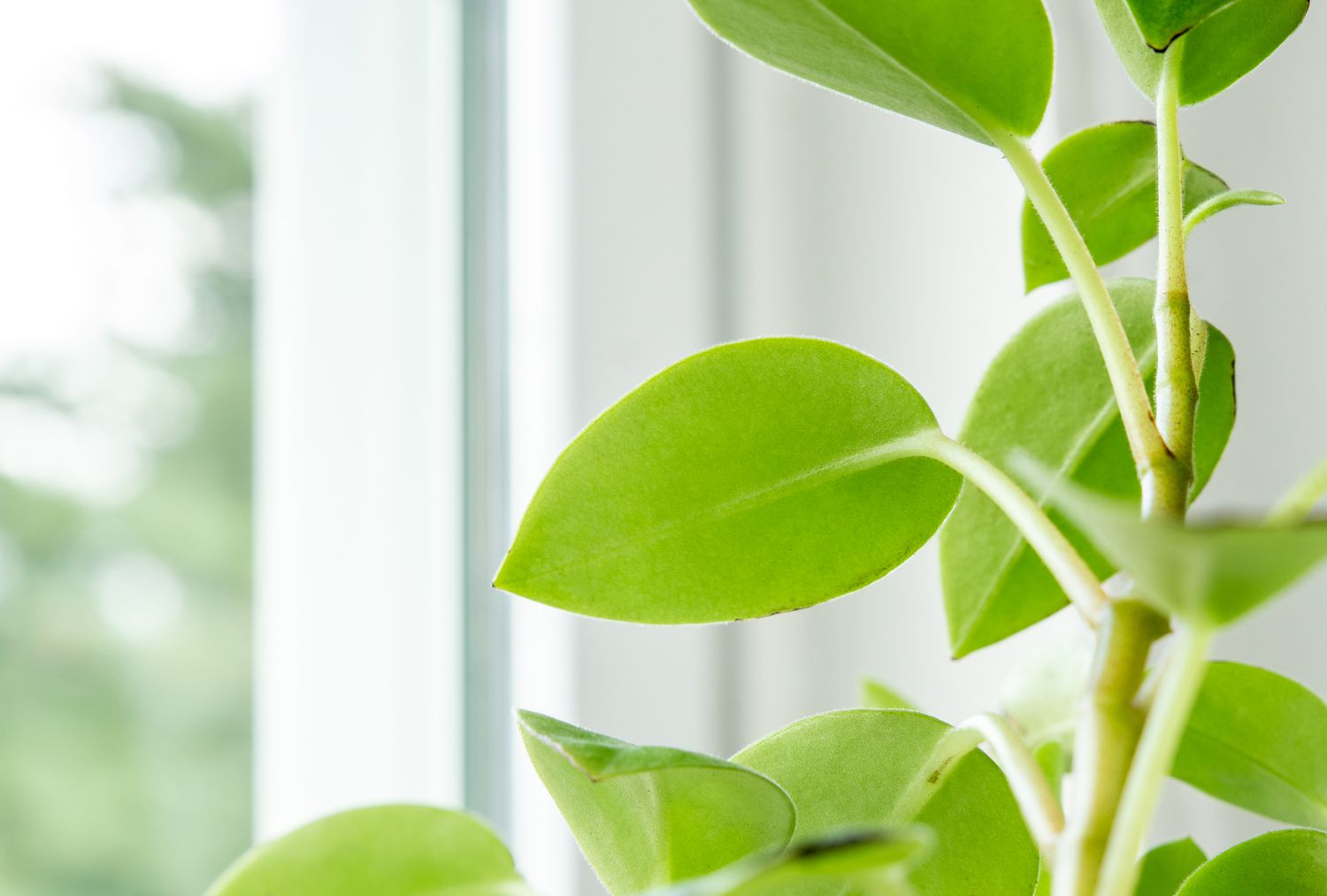Contents
- Light
- Soil
- Water
- Climate and Moisture Levels
- Fertilizer
- Propagating Peperomia Orba can be done through various methods. One effective way is by taking leaf cuttings. Simply cut a healthy leaf from the plant, allow it to callous for a few hours, and then place it in a well-draining soil mix. Keep the soil slightly moist and provide indirect light to encourage root development. Another method is to propagate through division, where you can separate the plant into smaller sections, ensuring each division has roots. This can be done during the plant’s growing season for the best results.
- Stem Cuttings
- Leaf Cuttings
- Transplanting and Replanting Peperomia Orba
- Frequent Issues Encountered with Peperomia Orba
- Foliage Changing to Yellow
- Softened Foliage or Stalk
- Wilting Foliage

Peperomia orba, often referred to as peperomia pixie lime, is a perennial plant frequently cultivated as a houseplant. This semi-succulent thrives in light, well-draining soil and favors bright sunlight and warm conditions for optimal growth.



Light
Peperomia orba thrives in conditions of full to partial sunlight. Excessive direct sunlight can damage the leaves, making a spot with bright, indirect light the most suitable. Typically, this can be achieved near a window that faces north or east. If you choose to position it near a south or west-facing window, ensure it is placed a few feet away to prevent it from receiving too much light.
Soil
This plant thrives in a soil blend that is airy and well-draining, promoting quick and effective drainage. If the soil is overly wet or holds onto moisture, the plant may experience root rot. An orchid potting mix is a suitable option, or you can create a blend using potting soil or coco coir mixed with perlite or sand in a 2:1 ratio to achieve a lighter, more open texture.
Water
Peperomia orba, classified as a semi-succulent, thrives with deep, infrequent watering. Ensure the soil is thoroughly soaked, then let the top few inches dry out entirely before the next watering. During the winter dormancy, extend the intervals between watering. In cooler weather, you might find that watering every few weeks is sufficient.
Climate and Moisture Levels
Peperomia orba is an excellent choice for indoor gardening, thriving in temperatures ranging from 65 to 75 degrees Fahrenheit. These plants are not particularly fussy about humidity, as they can adapt well to typical indoor humidity levels of 40 to 60 percent.
Fertilizer
Peperomia orba does not require frequent feeding, but you may opt to apply fertilizer once a month while it is actively growing. If you decide to fertilize, select a balanced formula, such as 10-10-10, and follow the application guidelines provided on the label. It’s important to refrain from fertilizing during the plant’s dormant phase.
Propagating Peperomia Orba can be done through various methods. One effective way is by taking leaf cuttings. Simply cut a healthy leaf from the plant, allow it to callous for a few hours, and then place it in a well-draining soil mix. Keep the soil slightly moist and provide indirect light to encourage root development. Another method is to propagate through division, where you can separate the plant into smaller sections, ensuring each division has roots. This can be done during the plant’s growing season for the best results.
Peperomia plants can be propagated effortlessly throughout the year, although the spring and summer months are the most favorable. While stem cuttings are a reliable technique for propagation, leaf cuttings can also be used. Below are the steps to successfully propagate these plants:
Stem Cuttings
- Collect these materials: sterile pruning shears or scissors, rooting hormone (if desired), a small container, and a soilless potting medium or orchid mix.
- Select a stem that has several healthy leaves. Cut a segment of the stem that is at least one inch in length.
- If you wish, you can immerse the freshly cut end of the stem in rooting hormone. Nevertheless, peperomia orba typically does not need rooting hormone for successful propagation.
- Place the cut end of the stem into the soil after filling the pot with a soilless or orchid mix.
- Maintain a consistently moist soil, but avoid using plastic to cover the pot, as this can create excessive humidity and saturation, hindering healthy growth. Place the pot in a location with bright, indirect light.
- In approximately 4 to 6 weeks, you should start to see the development of roots. Gently hold the plant and pull it slightly to feel for any resistance, indicating that roots are growing.
- When necessary, transfer cuttings to a bigger pot, but remember that these plants thrive in a cozy, snug environment.
Leaf Cuttings
- Collect these materials: sterile pruning shears or scissors, rooting hormone (if desired), a small container, and a soilless potting medium or orchid mix.
- Trim a healthy leaf along with its petiole, ensuring that the cut is made as near to the stem as you can.
- Place the soilless or orchid mix into the pot and insert the leaf into the medium, ensuring that approximately 80 percent of the leaf remains above the surface of the planting mix.
- Maintain a consistently damp soil without using plastic to cover the pot, as this can lead to too much moisture and humidity. Place the pot in a location with bright, indirect sunlight.
- Leaf cuttings might require a bit more time to develop roots compared to stem cuttings. After approximately six weeks, you can assess root development by gently holding the plant and pulling lightly to feel for any resistance indicating root growth.
- Move the cuttings to a bigger pot when necessary.
Transplanting and Replanting Peperomia Orba
Peperomia plants tend to grow slowly and thrive when their roots are somewhat confined. Therefore, frequent repotting is not required. However, if you observe roots extending from the base of the pot, it’s time to repot. Additionally, it’s beneficial to refresh the plant’s soil with new, nutrient-dense soil every few years.
When transferring peperomia orba to a new pot, it’s essential to select one that has drainage holes. Opting for terracotta or clay pots is advisable, as they facilitate moisture evaporation, helping to keep the plant properly drained.
When transferring the plant to new soil, you can opt to use the same container or one of comparable dimensions, provided the root system hasn’t expanded significantly. If the reason for repotting is that the plant has outgrown its existing container, select a pot that is only one or two inches larger than the one it is currently in.
Frequent Issues Encountered with Peperomia Orba
Being a semi-succulent, this plant primarily faces challenges associated with moisture and humidity. You can assess its health and determine necessary actions by observing the condition of its leaves and stem.
Foliage Changing to Yellow
Leaves turning yellow may signal two potential issues: insufficient sunlight or excessive watering. If the plant is situated in an area that gets fewer than four to six hours of bright, indirect light, yellowing may occur. Consider relocating the plant nearer to a window or to a different room, ideally one with a north or east-facing window.
To assess whether excessive watering is leading to yellowing leaves on your peperomia orba, try increasing the interval between watering sessions. Wait until the top 2 inches of the soil feel dry before adding more water. If the soil stays damp for a long time after watering, it indicates that you are watering the plant too often. Ensure the soil dries out before you water it again.
Softened Foliage or Stalk
If you observe that the leaves or stem of your peperomia are becoming excessively soft and mushy, it could indicate that the plant is experiencing root rot. Additionally, you might notice that the leaves or stems are turning brown or gray. Root rot occurs due to high moisture levels that promote fungal growth in the root area. The solution is to take the plant out of its pot and cut away any damaged roots, which will appear brown and mushy. Healthy roots, in contrast, should be firm and either green or white. Afterward, repot the plant in new soil and adjust your watering routine to allow the soil to dry out between watering sessions.
Wilting Foliage
If the peperomia orba’s leaves start to droop, it could be a sign that the plant is experiencing dryness, which may be due to insufficient watering or very low humidity. To remedy this, increase the frequency of watering, but ensure that you only do so when the top layer of the soil is dry to the touch. Additionally, you can enhance humidity by positioning the plant on a pebble tray filled with water, making sure that the soil does not touch the water directly.
What is the reason behind the nickname “radiator plant” for peperomia orba?
The popular moniker for Peperomia orba stems from its petite stature and affinity for warmer climates. Its size allows it to comfortably rest on a radiator, and while it might seem that it would thrive on the warm air, the truth is that Peperomia orba actually thrives best in a temperature range of 65 to 75 degrees.
Where is the best location for my peperomia orba in my home?
Peperomia orba makes an excellent addition to your desk or a slim shelf or windowsill in your kitchen or bathroom. However, it’s important to avoid placing it in direct sunlight, particularly from an unshaded south or west-facing window. Ideally, it thrives in spaces with east or north-facing windows.
Is peperomia orba classified as a succulent?
Peperomia orba is classified as a semi-succulent, which means it has characteristics similar to well-known succulents such as jade plants and aloe vera. Its stems and leaves are somewhat fleshy, allowing it to retain moisture. Nevertheless, it is not as resilient to dry conditions as a true succulent.


 Tips for Cultivating and Maintaining Haworthia Cooperi Plant
Tips for Cultivating and Maintaining Haworthia Cooperi Plant Tips for Cultivating and Maintaining Calathea Orbifolia
Tips for Cultivating and Maintaining Calathea Orbifolia What is Micro Clover? Benefits of Incorporating It into Your Lawn
What is Micro Clover? Benefits of Incorporating It into Your Lawn